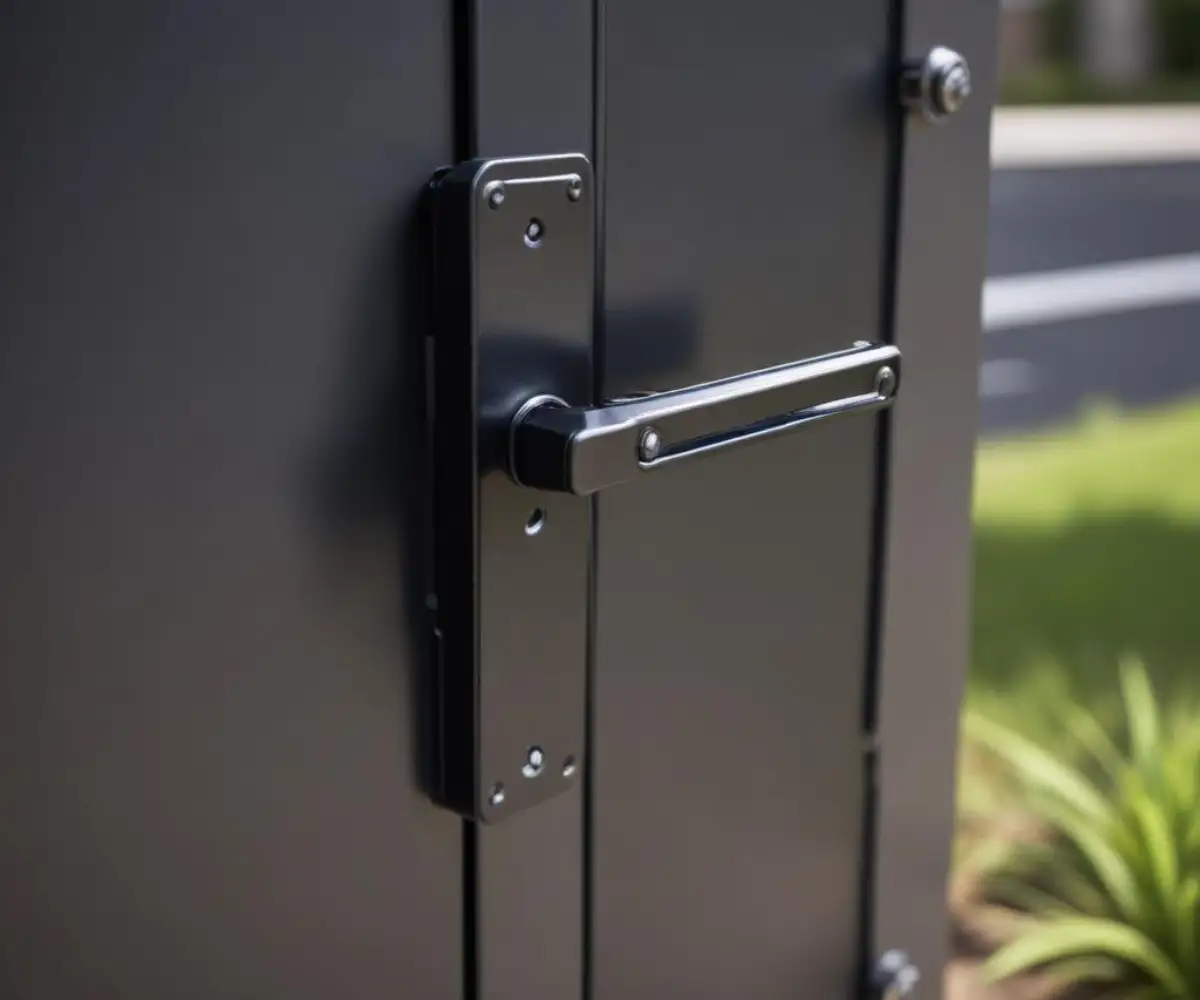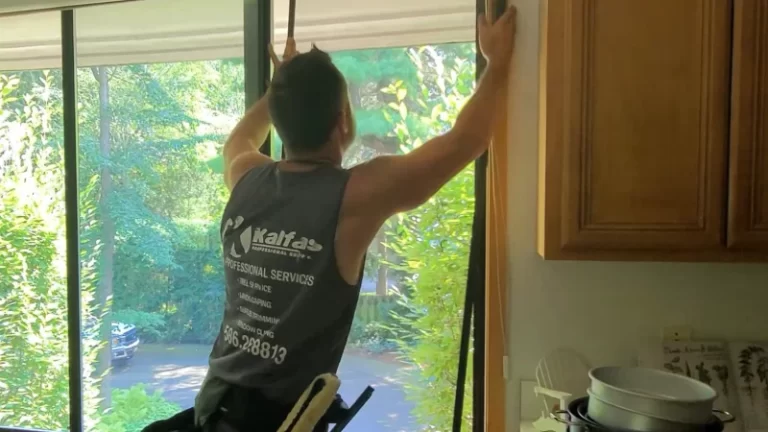Spring Loaded Mailbox Door Not Closing? Here’s the Fix
A mailbox door flapping in the wind is more than just an eyesore; it’s a direct invitation for rain, pests, and potential mail theft. That seemingly minor issue compromises your mail’s security and diminishes your home’s curb appeal. A faulty spring-loaded mechanism is often the culprit behind a door that refuses to stay shut.
This failure isn’t just an inconvenience; it exposes sensitive documents to the elements, leading to water damage and loss. Understanding the root causes of this common problem is the first step toward a simple, permanent solution that restores your peace of mind and the functionality of your mailbox.
You'll Learn About
Why Your Mailbox Door Spring Fails: The Hidden Culprits
The persistent opening and closing of your mailbox door puts immense stress on its spring mechanism. Over time, this repetitive motion, combined with environmental factors, inevitably leads to wear and eventual failure. Identifying the specific cause is crucial for an effective and lasting repair.
Relentless Wear and Tear
At the heart of most failures is simple metal fatigue. The spring inside the hinge is designed to withstand thousands of cycles of stretching and contracting. However, each use contributes to microscopic fractures in the metal, gradually weakening its structure until it can no longer provide the necessary tension to keep the door closed.
The quality of the original material plays a significant role in its lifespan. Inferior metals or poorly designed springs will succumb to fatigue much faster than their high-grade counterparts, making some mailboxes more prone to failure from the start.
The Assault from Mother Nature
Your mailbox is constantly exposed to the elements, and this takes a heavy toll on its mechanical parts. Moisture from rain, snow, and humidity is the primary enemy, accelerating rust and corrosion on steel springs and hinges. Once rust forms, it weakens the metal and impedes the smooth movement of the spring, causing it to stick or lose tension.
Extreme temperature fluctuations also contribute to the problem. Metal expands in the heat and contracts in the cold, and these constant changes can alter the spring’s structural integrity, making it brittle and more susceptible to snapping under pressure.
Improper Installation and Poor Quality
Sometimes, the problem begins the day the mailbox is installed. A misaligned door can place uneven stress on the spring mechanism, forcing it to work harder than intended. This constant, imbalanced pressure can cause the spring to wear out prematurely on one side or even break completely.
Lower-quality mailboxes often use subpar components that are not built to last. These might include thin, untreated metal springs or plastic parts that become brittle with sun exposure. While the initial cost may be lower, these mailboxes often require more frequent repairs and replacements down the line.
Your Step-by-Step Guide to Repairing a Spring-Loaded Door
Fixing a faulty spring-loaded mailbox door is a straightforward project that most homeowners can tackle with basic tools. Following a clear, methodical approach ensures the repair is done correctly, providing a long-lasting solution that restores the security and functionality of your mailbox.
Step 1: Diagnosis and Parts Procurement
Before beginning any repair, it is essential to accurately diagnose the problem. Open the mailbox door and closely inspect the hinge and spring mechanism. Look for visible signs of damage, such as a broken spring, severe rust, or bent parts. Sometimes, the issue is as simple as a loose screw that needs tightening.
Once you’ve identified the broken component, you need to find the right replacement part. Measure the dimensions of the existing hinge or spring. Take clear photos with your phone to reference when searching online or at a local hardware store. Many manufacturers offer specific replacement kits for their mailbox models.
| Spring Type | Common Material | Pros | Cons |
|---|---|---|---|
| Torsion Spring | Stainless Steel | Durable, good tension, rust-resistant. | Can be difficult to install, higher cost. |
| Extension Spring | Galvanized Steel | Easier to install, widely available. | More prone to stretching out over time. |
| Full Hinge Assembly | Aluminum or Steel | Replaces all moving parts, ensures compatibility. | Most expensive option, may require drilling. |
| Retrofit Snap-In Door | Aluminum or Plastic | No tools required for installation, quick fix. | Only works for standard-sized mailboxes. |
Step 2: Gathering Your Tools
With the replacement part in hand, the next step is to gather the necessary tools. For most spring and hinge replacements, you will need a basic set of tools. Having everything ready before you start will make the process smoother and more efficient.
Typically, you will require a Phillips head screwdriver, a flathead screwdriver, a pair of needle-nose pliers, and penetrating oil like WD-40 for any rusted screws. It’s also wise to wear a pair of safety glasses to protect your eyes from any flying debris or a spring that might release under tension.
Step 3: Removing the Old, Damaged Spring
Begin by applying penetrating oil to any screws that appear rusted or stuck, and let it sit for a few minutes to loosen them. Carefully unscrew the old hinge from both the mailbox body and the door. If the spring is under tension, use your pliers to hold it securely as you release the final screw to prevent it from snapping back.
If the hinge is riveted in place, you may need to use a drill to carefully remove the rivets. Once all fasteners are removed, the old hinge and broken spring should come off easily. Take this opportunity to clean the area, removing any rust or debris before installing the new part.

Step 4: Installing the New Spring Mechanism
Position the new hinge assembly, aligning the screw holes with those on the mailbox frame and door. It is often easiest to loosely attach the screws on the mailbox body first, then attach the screws to the door. This approach gives you some flexibility to make minor adjustments for a perfect fit.
Once the hinge is in place, tighten all the screws securely, but be careful not to overtighten, as this could strip the threads or crack plastic components. Open and close the door several times to test the new spring’s tension. The door should close firmly without slamming shut.
Beyond Repair: When to Replace the Entire Mailbox Door
Sometimes, a simple spring replacement isn’t enough to solve the problem. If the door itself is severely rusted, warped, or damaged, installing a new spring on a faulty foundation is only a temporary fix. In these cases, replacing the entire door or even the whole mailbox unit is the more practical and cost-effective solution.
Look for signs of widespread corrosion, cracks in the metal or plastic, or a door that is bent out of shape and no longer creates a proper seal. Investing in a complete replacement door or a new mailbox ensures all components are in good working order, providing better long-term protection for your mail.
Proactive Maintenance: Keeping Your Mailbox Door Working for Years
A little preventative care can go a long way in extending the life of your spring-loaded mailbox door. Regular maintenance helps prevent the common issues of rust and wear from taking hold, ensuring your mailbox functions smoothly for years to come and saving you from future repairs.
The Power of Lubrication
One of the simplest yet most effective maintenance tasks is regular lubrication. Applying a silicone-based or white lithium grease lubricant to the hinge and spring mechanism every six months reduces friction and prevents the squeaking and stiffness that can lead to premature wear.
The lubricant also creates a protective barrier against moisture, which is crucial for inhibiting the formation of rust. This small step ensures the moving parts operate smoothly and efficiently, preserving the spring’s tension and the hinge’s integrity.
Regular Cleaning and Inspection
Periodically cleaning your mailbox, inside and out, helps remove dirt and grime that can trap moisture and accelerate corrosion. While cleaning, take a moment to inspect the door mechanism for early signs of trouble, such as minor rust spots, loose screws, or a slight loss of tension. Addressing these small issues early can prevent a complete failure down the road.
A poorly closing door can also become an entry point for pests. Wasps, for instance, are known to seek out sheltered locations and might build a wasp nest inside a compromised mailbox. Similarly, a broken door may attract other unwelcome wildlife; dealing with birds, for example, is another common challenge for homeowners, and our guide on how to get rid of Carolina wrens offers solutions for that separate issue.
Upgrading Your Mailbox: Innovations in Door Mechanisms
If you’re tired of dealing with failing springs, it might be time to consider an upgrade. Modern mailboxes often feature improved door mechanisms designed for greater durability and longevity. Innovations include heavy-duty, rust-proof stainless steel components that are ideal for harsh climates.
Some newer models have replaced traditional springs with strong magnetic latches. These provide a secure closure without the mechanical wear of a spring, offering a reliable and low-maintenance alternative. A well-maintained mailbox is a key part of your home’s curb appeal, complementing landscaping decisions like whether you can put mulch against a brick house.
A Secure Mailbox Door is a Happy Mailbox
A fully functional, spring-loaded mailbox door is a small but critical component of your home’s security and upkeep. It protects your mail from weather and theft while contributing to a polished exterior appearance. By understanding the causes of failure and knowing how to perform a simple repair, you can easily tackle this common issue.
With just a few tools and a little time, you can ensure your mailbox door closes securely every time. This straightforward DIY project not only saves you the cost of a handyman but also provides the satisfaction of a job well done, giving you reliable access and peace of mind for years to come.

